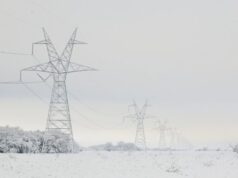El Niño-Southern Oscillation (ENSO) is the strongest signal in interannual climate variation. El Niño increases the precipitation over the equatorial central-eastern Pacific, which releases more latent heat into the tropical atmosphere and thus drives variations of the global climate system like a heat engine. It has been reported that ENSO-induced precipitation anomalies will shift and extend eastward under global warming, projected by climate change simulations from the phase five of the Coupled Model Intercomparison Project (CMIP5). The zonal shift of the ENSO heat engine would significantly change responses of the global climate system to ENSO forcing. However, the projected result has not been supported by a robust mechanism, mainly due to the large uncertainties in the amplitude change of ENSO under the global warming.
In a study recently published in Science Advances, an international team from China, the U.K. and the U.S. proposes a new mechanism to understand the eastward shift and extension of ENSO-induced precipitation anomalies under global warming. The researchers analyzed a large ensemble climate change simulation conducted by the Met Office in the U.K.
“We found under global warming, the weakened easterly trade wind over the tropical Pacific would weaken the meridional overturning circulation of the subtropical cell, and further cause the narrowing of the meridional span of ENSO,” said the corresponding author Dr. Bo Wu from Institute of Atmospheric Physics at Chinese Academy of Sciences. “It means that the sea surface temperature (SST) anomalies associated with the ENSO are more concentrated toward the equator. Tighter ENSO becomes more powerful in driving moisture convergence over the equatorial central-eastern Pacific, which leads to the eastward shift and extension of the precipitation anomalies, even if ENSO intensity stays unchanged under global warming.”
The eastward shift of the ENSO heat engine under global warming would not only lead to remarkable changes in global climate variations during ENSO years, but also accelerate the decay of El Niño events after their peak phase, thus shortening their duration.
Provided by: Chinese Academy of Sciences
Find your dream job in the space industry. Check our Space Job Board »
More information: Zixiang Yan et al. Eastward shift and extension of ENSO-induced tropical precipitation anomalies under global warming. Science Advances (2020). DOI: 10.1126/sciadv.aax4177
Image: Schematic diagram illustrating the physical processes responsible for the eastward shift and extension of ENSO-induced tropical precipitation anomalies under global warming.
Credit: Bo Wu











